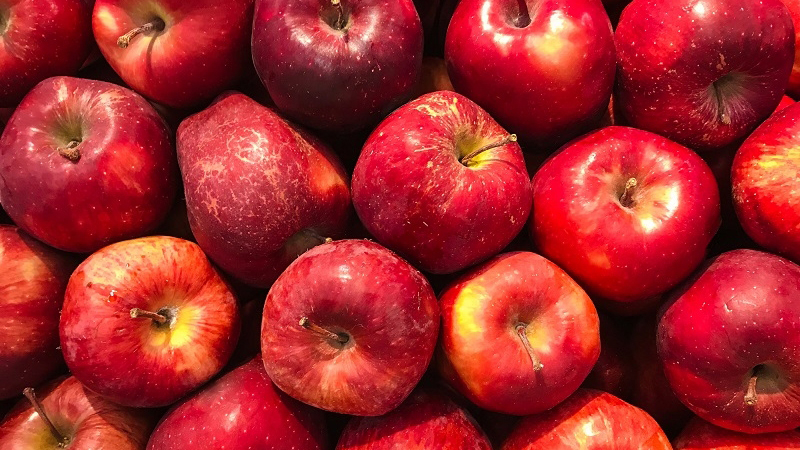Using the Power of Information To Find Intel on Your Crops
I received a call asking about New Jersey eggplant production that sent me down a rabbit hole. Information is power, especially in produce. And trying to gain that information through USDA and state level agencies can be maddening.
Back to the phone call. The caller had heard New Jersey growers produced more eggplant than any other state. They wanted to know more about when, where, and with whom to talk. Their client wanted to find a steady source and thought New Jersey growers could help. But in searching USDA’s shipping trend reports, they found in late August that only Michigan, Mexico, and Honduras were reporting shipments of eggplants, at the height of N.J.’s season!
A quick look at the weekly reports from July through September revealed earlier shipments from North Carolina, Florida, and Georgia, and eggplants from California the prior year. Nothing from N.J. (Ironically, as I was putting the finishing touches on this column, a video touting ‘California eggplant shipping from April to December’ popped up on my LinkedIn feed!)
I described Garden State eggplant production and conveyed that a couple of recent publications still touted New Jersey’s No. 1 ranking. However, I also shared that eggplant had dropped off USDA’s reports about the top vegetable commodities years ago. I didn’t have a good recommendation for where to find better market information though.
That piqued my own curiosity. Notwithstanding New Jersey’s secret eggplant story, how does one find out about any produce in the market?
Barking Up the Wrong Tree
My first thought was to talk with our N.J. State Statistician, Bruce Eklund, who works for USDA National Agricultural Statistics Service (NASS) from an office housed at the N.J. Department of Agriculture. He quickly pointed me to the 2017 Ag Census as the most likely source of those ranking stats, steering me directly to the eggplant section.
“Look starting at page 544 of table 29.”
There it was. A tally of every state reporting eggplant production indicated the number of farms and acreage harvested for both 2017 and 2012. In all, 416 New Jersey farms produced eggplant on 849 acres, followed by California with 705 acres, Florida and Georgia in the 600s, New York and North Carolina around 250, with the rest, including Michigan, all under 200 acres.
Those five-year Ag Census production stats and annual estimates in between, like New Jersey’s here, don’t tell the whole story. Market News Service, a part of USDA’s Agricultural Marketing Service (AMS) — a completely different division than NASS — produces that shipping point trends report. Those reports are available through their MyMarketNews portal.
Disconnect in Pricing/Supply Information
It’s always been intriguing that pricing at the local produce auction is not available for the public to see. But one must fully understand that the farm gate prices established there are not the prices that the local buyer-shippers charge to buyers that purchase those products for their retail stores.
Those farm gate prices are just not the same as what is reported from other shipping points. It’s the shippers that would need to supply analogous market details.
Of course, pricing is only half of that story. For wholesale more than retail, prices that farmers receive are tied directly to availability of supply. Too much and prices plummet. A shortage in another production region, and wholesale prices spike. Unless there’s a catastrophe somewhere, retail produce prices don’t fluctuate that much.
If local farm gate prices are subject to regional or national supplies, how do you learn what’s moving in the market so can you make reasonably informed decisions about whether prices you receive are fair?
NASS publishes weekly Crop Progress reports for each state based on surveys of people in various parts of the produce industry. But you would need spend a lot of time reading to sift through each state’s report.
AMS Market News explains that it tracks and “publishes market information, like price and volume, for hundreds of agricultural commodities … [to] promote market transparency and give farmers and businesses the tools they need to make informed business decisions.” Market News operates the Market Analysis and Reporting Services (MARS) that gives access to the data they collect through the My Market News website.
According to the Market Analysis and Reporting Services (MARS) fact sheet, “My Market News … gives faster and greater access to detailed datasets and reports in one easy-to-use tool.” Including instant access to public data in a searchable database. It says you can create customized pricing and shipment reports and has many standard reports.
But while it provides some instructions, I haven’t quite figured out why I can’t find New Jersey eggplant production.
One more call. Joseph Harrison is the Officer-In-Charge of the Specialty Crops Market News office that reports from the Philadelphia Wholesale Produce Market. His reports include sales of New Jersey eggplants, whether they’re by growers selling directly, shippers delivering to the market, or by the merchants that operate at the facility. That information can be found in Terminal Market or Specialty Crops Market reports rather than the Shipping Trends reports on MyMarketNews.
Close, but still not the information I was seeking.
But, Mr. Harrison did suggest why it’s difficult to find what I wanted. Staffing shortages throughout Market News has reduced the number of offices reporting from the field. Indeed, the last Market News reporter covering NJ retired nearly 15 years ago and was not replaced. The other issue of getting information out of important shipping areas, like NJ and Ohio, is finding cooperators willing to share their information.
Remember, information is a powerful commodity.










